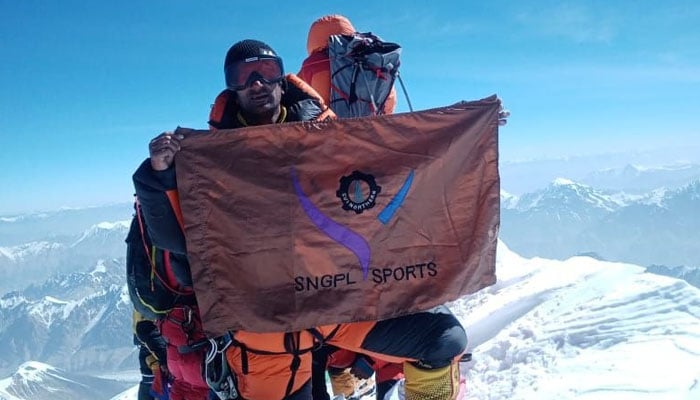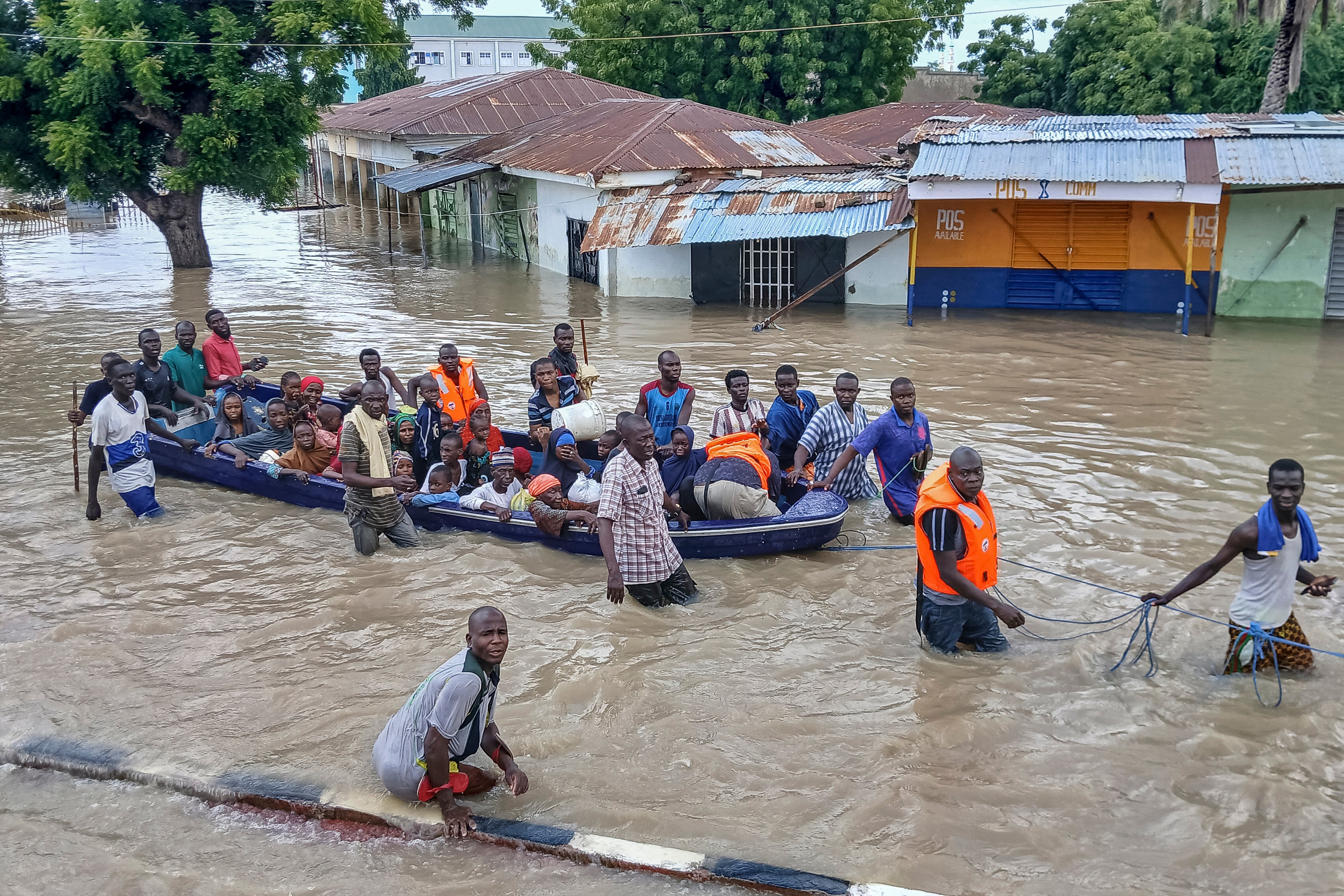
The World Food Programme (WFP) is set to run out of food in Nigeria this month following crippling aid cuts, with more than a million people now at risk of starvation, The Independent has learnt.
The revelation comes after a series of concerning updates from Nigeria since the Trump Administration terminated more than 80 per cent of aid contracts run by USAID, which until this year had been a major humanitarian provider in the country.
In April, President Tinubu declared a state of emergency on food security in the country, while in June, a report from the WFP and UN Food and Agricultural Organisation (FAO) warned that 30.6m people in the country were now facing food crisis or acute food insecurity, and 5.4 million children were acutely malnourished, as a result of intensifying conflict, economic challenges and climate change impacts.
Now, the WFP – the UN agency that is widely seen as the last line of defence against starvation – is saying that it no longer has the funds to continue its operations.
“We only have resources to go on until this month, and the way things are looking, people are going to starve,” says WFP Nigeria spokesperson Chi Lael.
“We do not have any contingency. We don’t have any carry-over. We are using all the money we have, which takes us to July,” she adds. “Our office is completely stunned right now.”
Lael, who has worked for WFP since 2018, said that the current crisis is different to the “peaks and troughs in funding cycles” that are typical in humanitarian organisations. “There really is no plan for anyone to step in,” she said.
Some 1.3 million people will receive food assistance this month from WFP, but from the start of August, that total is set to fall to zero. WFP’s network of life-saving nutrition treatment clinics are also all set to close, starting with 150 clinics closing in July, which will lead to the immediate cessation of malnourishment treatment for 300,000 children.
While a lifeline to many, WFP has already in recent months been able to only support a fraction of those in need of food support.
A malnutrition analysis released earlier this year by the IPC, a UN-backed food insecurity classification system, found that from May 2024 to April 2025, only 20 per cent of malnourished children in the country were receiving necessary treatment, with malnourishment already contributing to 45 per cent of all deaths of children under five.
According to Lael, WFP closing its operations in the country would result in people either staying put and risking starvation, leaving their homes and moving to other regions with likely no better prospects, or submitting to Boko Haram, the terrorist group that has been driving an armed insurgency in the country’s North since 2009. “All of these are horrible options,” she says.
ll
Before contracts were terminated, USAID provided just under 50 per cent of WFP Nigeria’s funding – though Lael says that it is not only the fault of the US, with many other donor countries reducing their funding in recent years.
Khatija Nxedlana, Nigeria country spokesperson for the International Committee of the Red Cross, concurs that aid cuts are not a new phenomenon.
“Over the last couple of years, we have seen less and less money coming in, and organisations have been reshaping and refocusing their priorities,” she says.
But the immediate termination of programmes under Elon Musk’s DOGE Programme – which included close to $200m of cuts in Nigeria – caused chaos at humanitarian agencies and prevented them from being able to continue prioritising resources.
The news from Nigeria also comes as new research published in the Lancet this week found that US cuts to humanitarian aid under President Trump could lead to 14 million additional deaths by 2030, with children representing a third of those at risk.

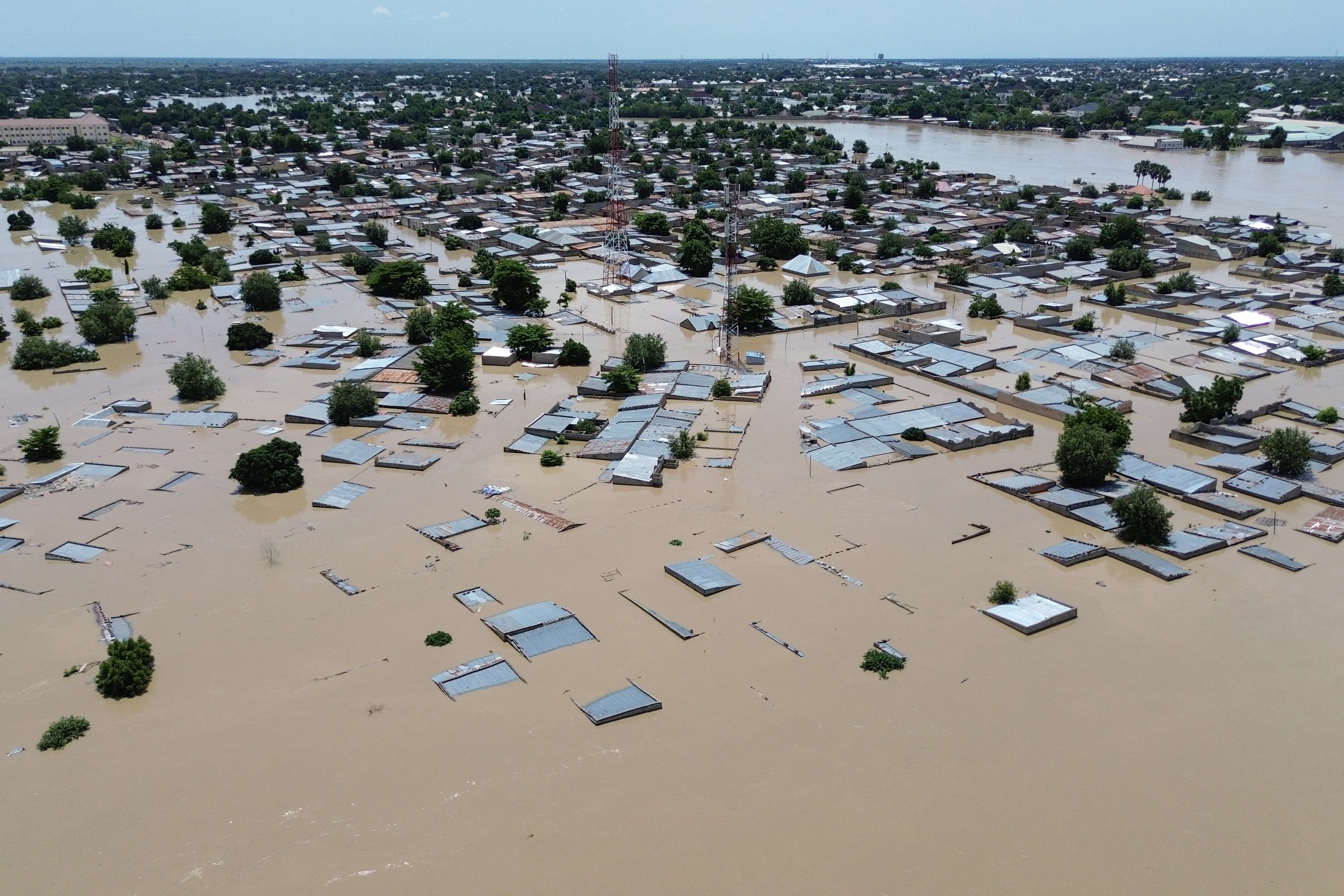
Away from the wealth and glamour of the coastal commercial centre Lagos, Nigeria’s food crisis is centred on the country’s Northern districts.
A key driver of the crisis is the ever-more volatile rain patterns driven by the climate crisis. Weather reports from early June, for example, warn of below-average rainfall forecasts for certain central and northern food-growing areas of the country, which are set to result in crop production shortfalls.
But even more devastating than drought in recent years has been the impact of flooding, which had devastating impacts in 2022, 2024, and now also in 2025, with at least 700 people believed to have died from flooding in the town of Mokwa in Niger State at the end of May.
“In 2022, everyone said: We have not seen rains like this in a decade. Then in 2024, they said: We have not had rains like this in 30 years. And this year, Niger State has seen its worst floods in 60 years,” says Lael. “It’s like the rainy season has just become the flooding season.”
These floods wash away farmlands and infrastructure, leaving nothing in their place. “And the problem now is that there’s no recovery time,” adds Lael. “A year is not enough time to rebuild entire communities and get everybody back onto their farms.”
The volatile Lake Chad Basin
Much of Nigeria’s most climate-vulnerable population lives in the Borno, Yobe, and Gombo states in the country’s North East, which in turn form part of the Lake Chad Basin, a fertile region spread over Niger, Cameroon and Chad, and which centres on the famous lake.
The region has been effectively in a state of constant humanitarian crisis for more than a decade, with at least three million internally displaced people (IDPs) across the basin at the moment, according to figures cited by OCHA, the UN humanitarian agency.
A poster child for environmental degradation for much of the Twentieth Century, Lake Chad lost 90 per cent of its surface area in the 1970s and 80s as a result of reduced rainfall and poor land management practices – though the water level has since stabilised, and an estimated three million people continue to live off the fish stocks and farmlands of the region.
Flooding is now the key climatic risk of the region, after extreme droughts of the 1970s and 80s baked soils hard and left them impermeable. The floods of 2022 and 2024, for example, displaced millions across the four countries, and inundated agricultural land.

Meanwhile, Boko Haram continues to cause terror in the towns and villages around the lake, with reports of an uptick in violence in Northeastern Nigeria in recent months, after several years of waning attacks.
On the night of June 21, for example, a woman who had been hiding an improvised explosive device under her hijab reportedly killed at least 12 people after detonating it in a crowded fish market in the town of Konduga, in Nigeria’s Borno state.
“These are really vicious attacks, and people are living in fear,” says Lael. “You’re in a marketplace, and you just do not know if the person next to you is carrying a bomb.”
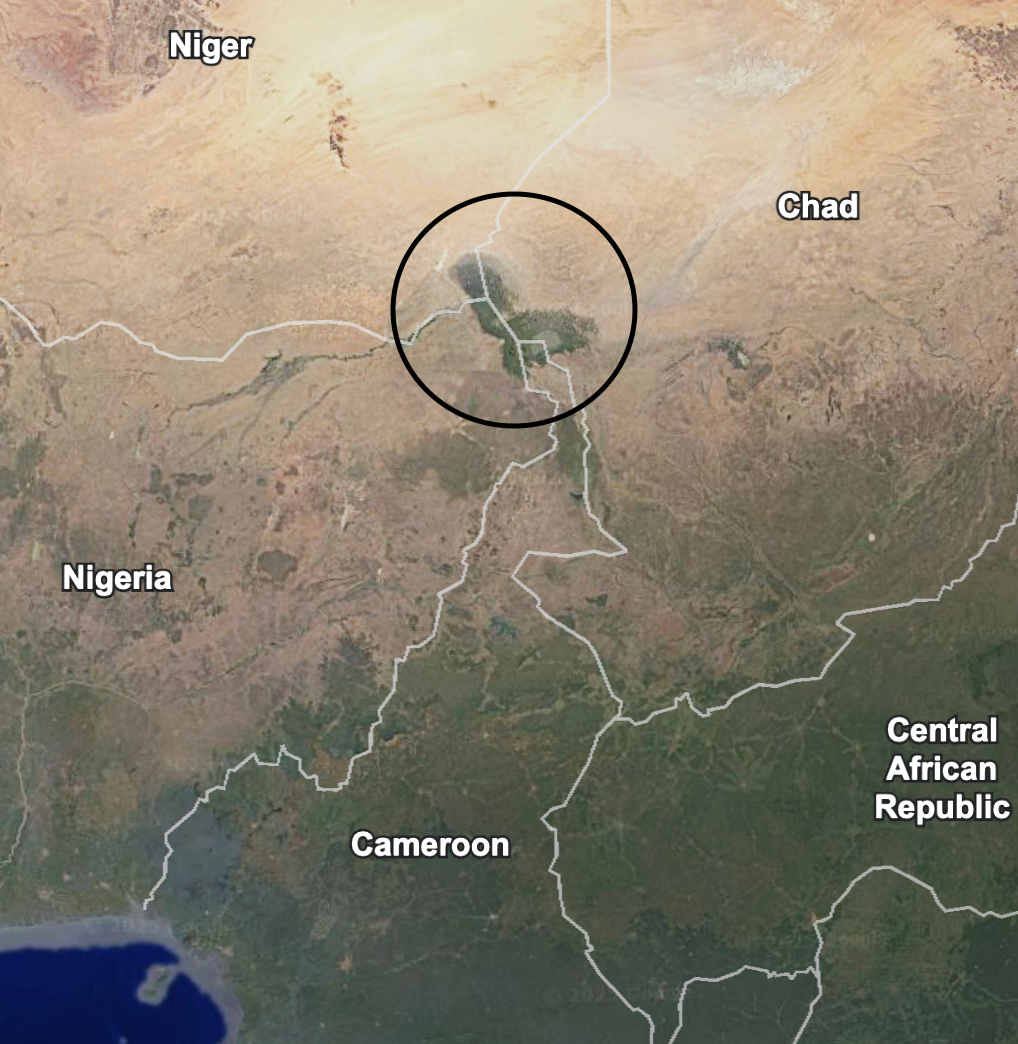
Humanitarian experts in countries across the Lake Chad region that have been interviewed by The Independent are warning that this crisis risks being forgotten as more high profile crises take the media spotlight – just as aid cuts put an already-delicate situation under ever greater stress.
“The Lake Chad Basin feels like a forgotten crisis, and with people not only forgetting that people are in dire need, but also that Nigeria’s stability is crucial for regional stability,” says Lael.
“There is a sense that Lake Chad has not been very attractive to international funders, and the aid cuts are only making that worse,” adds Eugene Nforngwa, the programme director at the Africa Coalition for Sustainable Energy and Access, who is based in the Cameroon capital Yaoundé. “Countries like the US, UK and the EU have prioritised other crises.”
Nforngwa also confirms that Cameroon – which has an estimated 3.3 million people in urgent need of humanitarian assistance – is facing similar impacts following cuts to humanitarian aid, particularly from the US.
“Programmes have shrunk, facilities have closed, and many staff have lost their jobs,” he says. “We now have a large number of organisations competing for a very small pool of funding.”
Over the border in Chad, meanwhile, there have also been major cuts, with one source in the region telling The Independent that the human rights agency UNHCR has been dealing with a 40 per cent cut to its budget this year, despite the fact that there has been an influx of refugees from Sudan.
“On the climate front, sometimes there is a lack of rain, and at other times there is too much rain,” says Augustin Zusanne, a Chad-based analyst at the UN humanitarian agency OCHA. “There also continues to be a major security threat from Boko Haram around Lake Chad.”
OCHA’s humanitarian response plan for Chad – which represents the total amount of money required to meet the country’s humanitarian needs – is currently 11 per cent funded. Normally at this time in the year, it is 20-30 per cent funded, says Zusanne.
Speaking at a conference organised by the International Institute for Environment and Development in London last week, Chad’s environment minister Bakhit Djamous Hassan gave his assessment of the country’s humanitarian situation.
“Our communities awake to a triple challenge, the devastating effects of climate change, ongoing insecurity and growing humanitarian needs,” he said. ““We are facing rampant desertification, preparing droughts followed by devastating flooded floods, all while hosting over a million refugees and internally displaced persons.”
“This convergence of crisis is not just statistical, it is the lived reality of millions struggling to survive.”
Families on the front line
Back in Nigeria, humanitarian workers report a feeling of fatigue among the victims of a humanitarian crisis that has now been dragging on for many years – and particularly so among the country’s 3.7m internally-displaced people (IDPs), of whom more than half live in the Northeastern Borno State.
“People in the Northeast have been impacted by Boko Haram violence for 15 years now,” says Lael. “Many are living in IDP camps, but even if not they will likely be topping up whatever they are able to farm with food assistance. And they are quite literally physically and emotionally exhausted.”
These are people like 40-year-old Murka, who is the sole breadwinner for her 10 children and her missing husband’s mother and father, and who has been receiving food aid assistance from WFP for just over five year.
“The WFP food ration only lasts us for 15 days and after that we start struggling again,” she told WFP in a recent fact-finding mission. “Sometimes I don’t eat just to ensure that I feed my husband’s elderly parents and my children.”
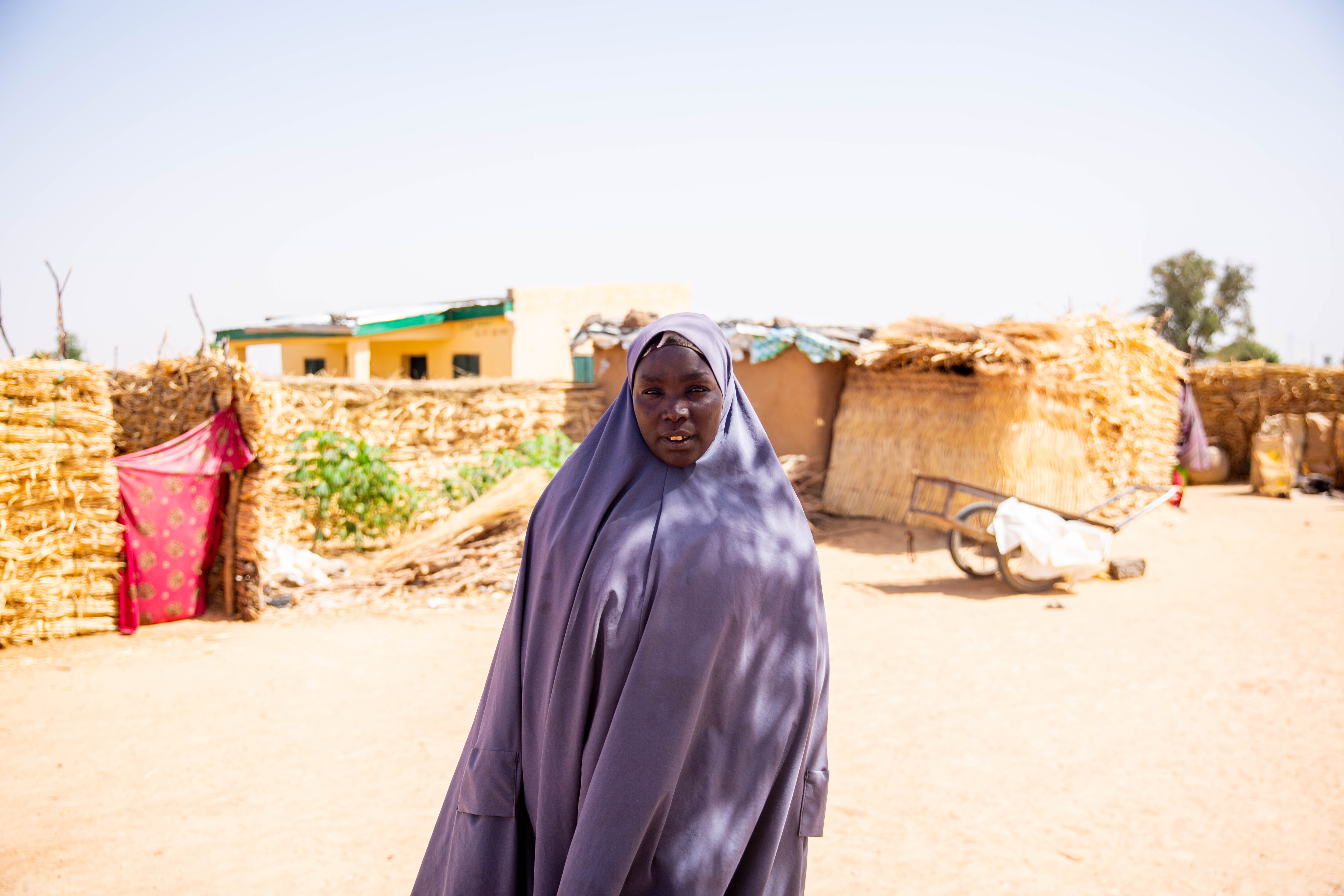
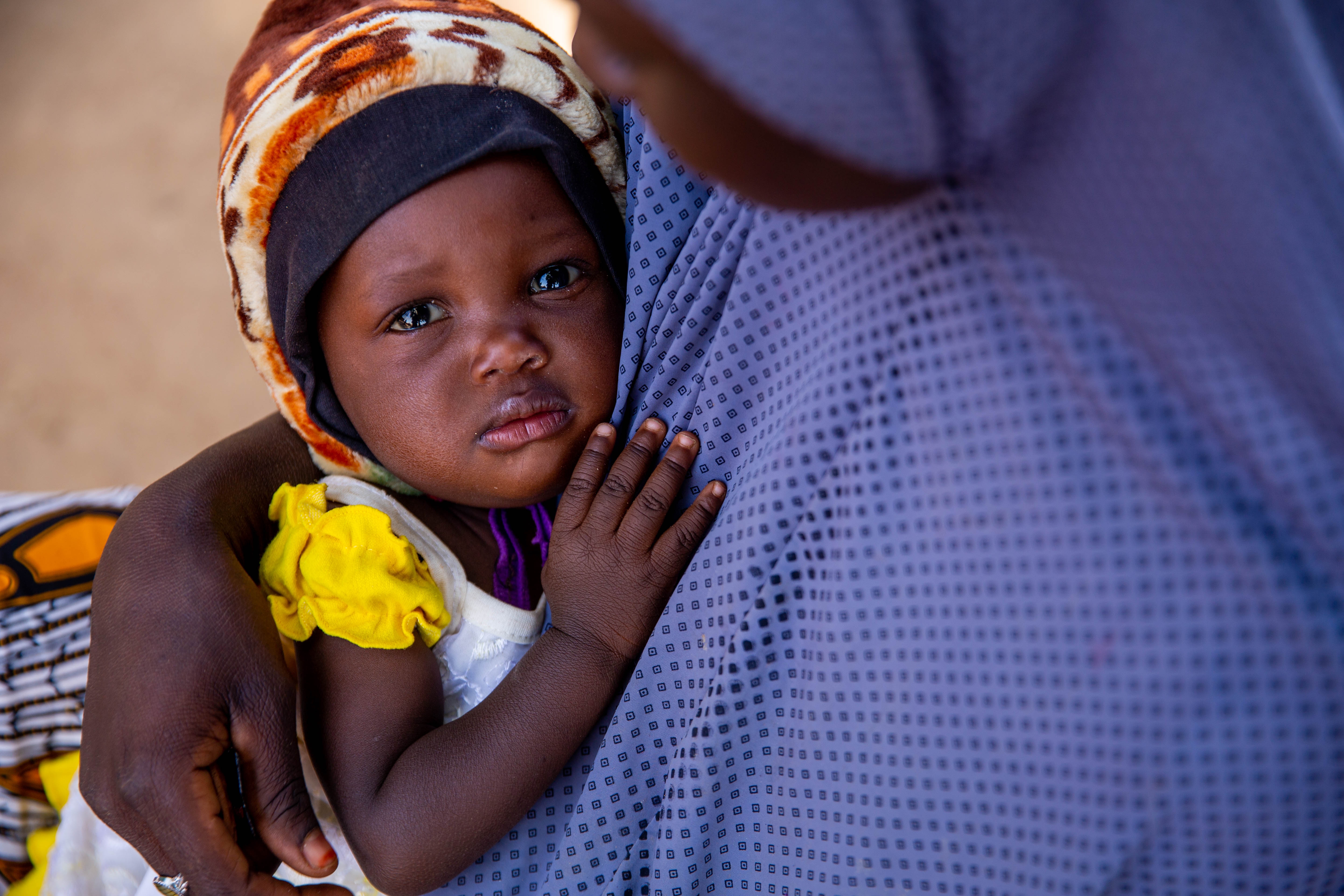
25-year-old Yagana Bukar, who lives in Borno State with her four children, described similar hardships around not always having enough food, despite WFP’s support.
“We just have water, which I put water on fire that keeps boiling just to keep assuring the children that food will soon be ready till they fall asleep,” she said.
On the same mission, WFP also spoke to Ya Kaka, who receives malnutrition treatment for her eight-month-old baby. The 25-year-old described how she had been kidnapped by an armed group when she was 18 years old, married off to one of the fighters, and forced to have a child, before later escaping.
“I’m hoping and praying to God to take away all my pains,” she said. “I want to forget all I’ve gone through or all that I’m always thinking about.”
Even with WFP and other aid organisations offering their support, it can be hard for people to plan the future. A recent report from the Internal Displacement Monitoring Centre describes the phenomenon of how, even after flood waters retreat, IDPs are simply “staying in the camp” as they feel unable to pick their lives back up as a result of the persistant challenges.
For such people, it is often the case that “the only hope they can find in their lives” comes in the form of food assistance, says Lael. With that now under threat, the hopes of ever tackling the crisis around the Lake Chad basin look ever more remote.
This story is part of The Independent’s Rethinking Global Aid series




